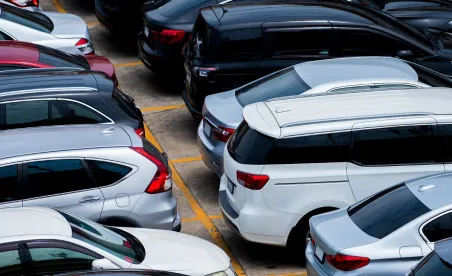The North American and global automotive sector is watching closely to see how the United States ultimately responds to the decision of December 14, 2022, made public on January 10, 2023, which upheld Canada’s and Mexico’s position on an important issue for calculation of a vehicle’s regional value content (RVC) under the USMCA. In dispute was whether a Core Part or Super Core Part that qualifies as originating under Articles 3.7 to 3.9 of the USMCA Auto Appendix can then have 100% of its value count as originating content when calculating the RVC of the fully assembled vehicle. The United States had argued that there was a separate “origination requirement” for Core Parts and Super Core Parts which, once satisfied, had no input into the vehicle RVC calculation. Instead, the United States argued, the vehicle RVC calculation would need to proceed from scratch, without the “roll-up” represented by the 100% value of originating Core Parts and Super Core Parts entering the vehicle RVC calculation. One consequence of the U.S. approach would have been on producers’ use of Chapter 4, Article 4.8, which limits them to just one layer of intermediate material roll-up on self-produced intermediate materials.
The Fundamental Holding
The Panel noted that the fundamental problem with the U.S. position was the clarity of the USMCA text about the consequences of a Core Part or Super Core Part satisfying Article 3.7 to 3.9 of the Auto Appendix. In the Panel’s words:
145. The Panel is not persuaded by the United States’ reading of the text. . . . . The VNM calculation methodologies set out in Articles 3.7 through 3.9 provide a means for determining the core parts RVC. The core parts RVC is an input into the vehicle RVC. . . .
146. The key term that supports this reading of the text is “originating”. The Panel observes that under Article 1.5 of the Agreement, “originating” means “qualifying as originating under the rules of origin set out in Chapter 4 (Rules of Origin) or Chapter 6 (Textile and Apparel Goods)”. . . .
148. The United States’ position is that the meaning of “originating” depends upon the context in which it is used. According to the United States, the context here is a separate, standalone core parts “origination requirement”.
149. The Panel sees no reason to attribute different meanings to the term “originating” which is used throughout Article 3. Nothing about the context of the term’s deployment in different parts of the Article suggests otherwise.
150. Article 3.7 gives producers a means by which to determine that their core parts are originating, and indeed requires them to do so. Once the core parts are found to be originating, Article 4.5.4 permits the producer to roll-up the RVC of the core parts when calculating the vehicle RVC. To conclude otherwise would require an express exemption or the use of different language entirely. (emphasis added)
Alternative Staging
The USMCA also provided in Article 8 of the Auto Appendix that the parties would allow Alternative Staging Regimes (ASRs) for up to 10% of a producer’s North American production, allowing them to reach the RVC (generally 75%) required after five years at a slower pace on that portion of their production. The United States issued its ASR approvals, however, subject to a condition that required producers to follow the U.S. vehicle RVC methodology, the one the Disputes Panel has now rejected. The Disputes Panel held that this U.S. ASR condition breached Article 8 of the Auto Appendix.
Accumulation
One other interesting aspect of the Disputes Panel’s decision is its confirmation that all three parties (U.S., Canada and Mexico) agreed that producers, in doing their Core Part or Super Core Part calculations using option (b), i.e., using Auto Appendix Article 3.8(b) or 3.9(b), are to count the VNM of a non-originating component in Column 2 of Table A.2 as the non-originating value that goes into the Core Part or Super Core Part calculation. In the Disputes Panel’s words: “The Panel notes the Parties interpret “the value of any non-originating components” in Article 3.8(b) to mean the VNM of non-originating components.” This is a useful confirmation of the correct interpretation of this text in Articles 3.8(b) and 3.9(b), which means that the principle of accumulation in Chapter 4, Article 4.11 applies here as it does generally to RVC calculations under USMCA.
Implications of the Decision
The United States said that it found the Decision “disappointing” and would discuss a possible resolution with Canada and Mexico. Unlike some WTO decisions which have gone against the United States (e.g., the WTO steel and aluminum tariffs ruling of December 9, 2022), there has not been a statement by the United States that it rejects or will ignore this USMCA Decision. One hopes that by the end of the 45-day consultation period provided under USMCA, there will be a confirmation by the United States that it will indeed follow the Decision. It is hard to believe that the last U.S. Administration, which negotiated the text of Articles 3.7 to 3.9 of the Autos Appendix, did not understand that Core Parts and Super Core Parts found to be “originating “ under those RVC tests would indeed count as “originating” in the vehicle RVC calculation. Indeed, in accordance with the Vienna Convention on the Law of Treaties, the Disputes Panel cited as a supplemental means of interpretation an email sent by the lead U.S. negotiator on rules of origin to his Canadian counterpart in June 2020 that endorsed the Canadian position on this very issue.
As Canada also pointed out in the hearing of the Dispute, the Decision on this issue does not mean that the United States has not secured significant additional North American content requirements in the auto sector under the USMCA. The USMCA has not only raised the vehicle RVC from 62.5% under NAFTA to 75% under USMCA, it has also imposed in the auto sector new North American steel and aluminum sourcing requirements and Labor Value Content requirements, as well as a rapid response mechanism for compliance with the labor terms of the USMCA, a mechanism that the United States has already invoked, including successfully, a number of times.



 />i
/>i

